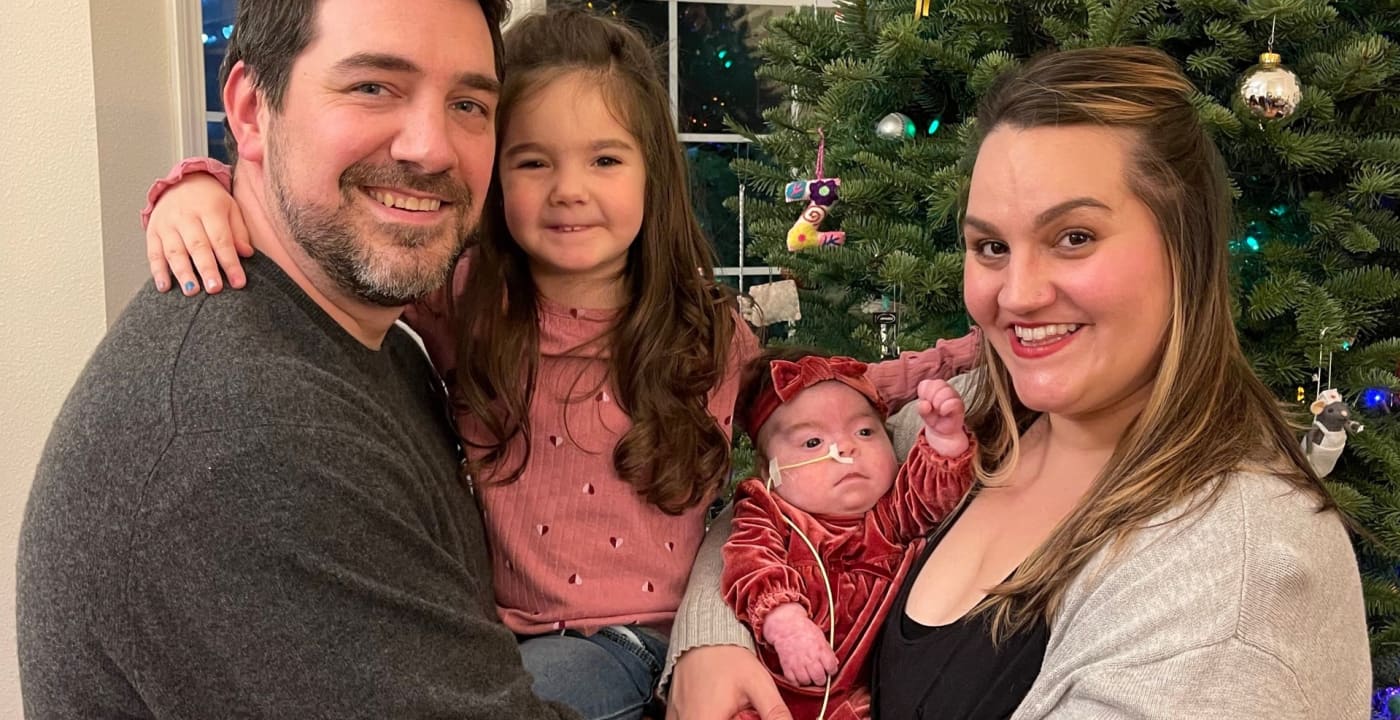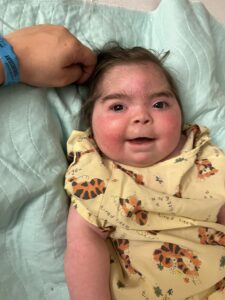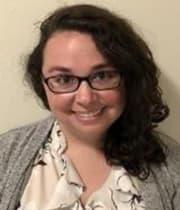Mary Bridge Children’s palliative care team walks alongside local family

To parents Kelsey and Eric, their daughter Stella was a unicorn. She was born with two extremely rare genetic conditions, a combination that had never been documented before.
Stella had a booming, hearty laugh, which was always a surprise to hear coming from her tiny frame.
She also loved MultiCare Mary Bridge Children’s Hospital. At every visit, Stella would visibly perk up whenever someone from her care team entered the room. According to Eric, Stella spent about one-third of her life at the pediatric hospital before her passing at 23 months.
Caring for a child with a serious illness
Although Kelsey had worked as a nurse at MultiCare Tacoma General Hospital when she gave birth to Stella, she wasn’t a pediatric nurse — and parenting a child with complicated medical needs threatened to overwhelm her and Eric.

Kelsey and Eric see Stella’s Mary Bridge Children’s team as family.
“When Stella discharged from the NICU, she was only 1 month old and already had 12 appointments scheduled for her to follow up with a variety of specialists,” Kelsey remembers. “And while we were figuring how to become a family of four, we also were learning how to best care for her, which included oxygen, feeding tubes, medications and therapies.”
Fortunately, a nurse practitioner asked Kelsey if she would be interested in palliative care, and she and Eric wholeheartedly welcomed the additional layer of support on their daughter’s journey with serious illness.
Palliative care, which was brought back to Mary Bridge Children’s in 2022 thanks to donations through Mary Bridge Children’s Foundation, offers a multidisciplinary team alongside a patient’s medical therapy. This approach helps facilitate communication across all care teams involved; explore a family’s goals and values so all decisions and care received are through a lens of what’s most important to the family; formulate plans for the future; and connect families with community resources.
For Stephanie Raghubeer, MD — who leads the program and is board certified in pediatrics and fellowship trained in pediatric palliative care — palliative care is holistic, family-centered care that differs from end-of-life care.
“We are here to support families all through their journey with serious illness, no matter what the prognosis is,” she explains. “(We) focus on the whole child and the whole family, and make sure we’re thinking about not just the physical things that they’re experiencing, but what’s happening to them spiritually, what’s happening to them emotionally, what’s happening to their relationships. And not just as a patient, but as part of a whole family and part of a community.”
Eric and Kelsey first met Dr. Raghubeer and their palliative nurse navigator and social worker in the pediatric intensive care unit.
“I’ll never forget sitting and meeting with them, and just them as people being like a calming, kind energy to just talk about things,” Kelsey shares. “They were just there to support us and then help advocate for us. I’m so grateful that they were able to take a lot off our plates and help us really be Stella’s parents again and see her as a baby instead of just like a patient.”
From Eric’s perspective, Mary Bridge Children’s palliative care was a “game-changer,” from helping them navigate relationships with their care team and the medical system in general to connecting Stella with a complex care pediatrician.
A higher level of excellence through philanthropy
Nationally, palliative care tends to be underfunded. At Mary Bridge Children’s, however, community support through the Foundation has helped expand education, deepening staff members’ knowledge and their ability to serve patients. Philanthropy also makes possible special, mission-driven opportunities, such as remembrance events where families who have lost a child, like Kelsey and Eric, return to honor their memory.

Donor-supported offerings like remembrance events help the whole family, including siblings, honor the memory of their loved one.
“It’s an honor to do the work that we do, and donor funds help us do it with a higher level of excellence, which is what these families deserve,” Dr. Raghubeer shares.
Eric and Kelsey are one such family who has experienced the impact of these donor investments.
“I don’t even know if I have the right words to thank donors, but I am so grateful,” Kelsey reflects. “In Stella’s last couple months of life, I felt like I got a little bit of power back to be able to be her mom and be in control. I’m able to look back and be proud of decisions that we made and proud of the mom I was to her and the experiences and memories we have.
“We would not have been able to give Stella that peace or love or goodbye without palliative care,” she continues.




